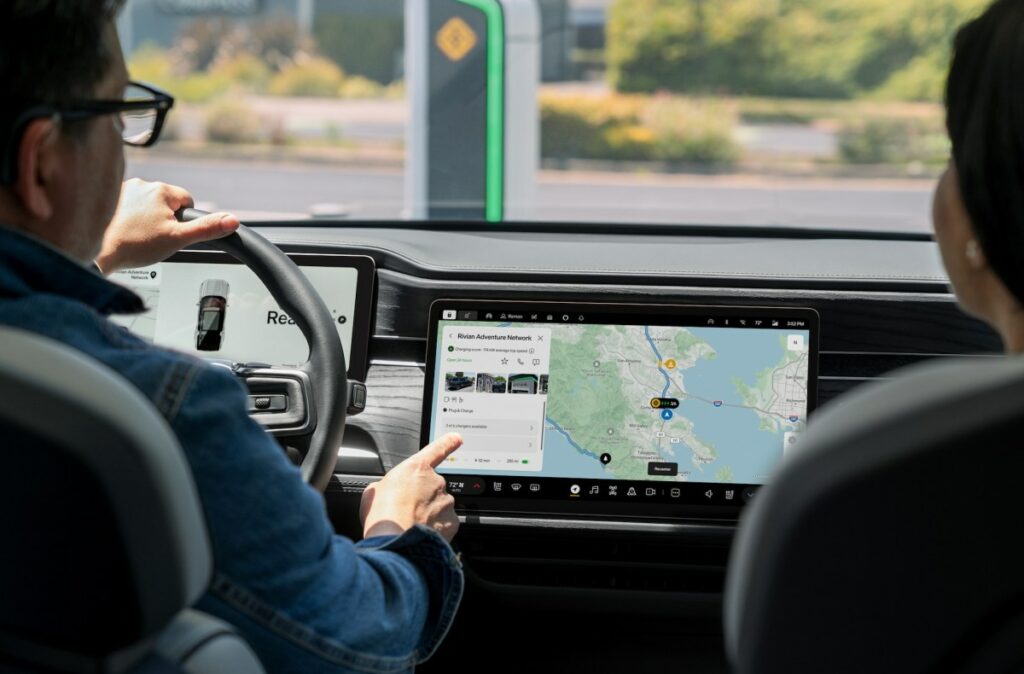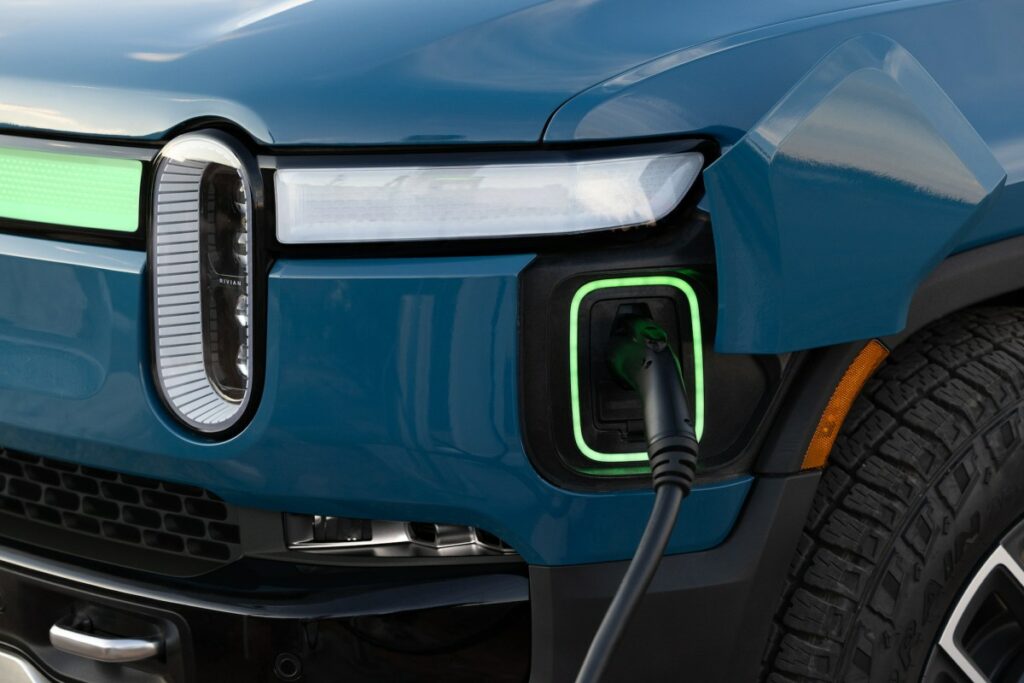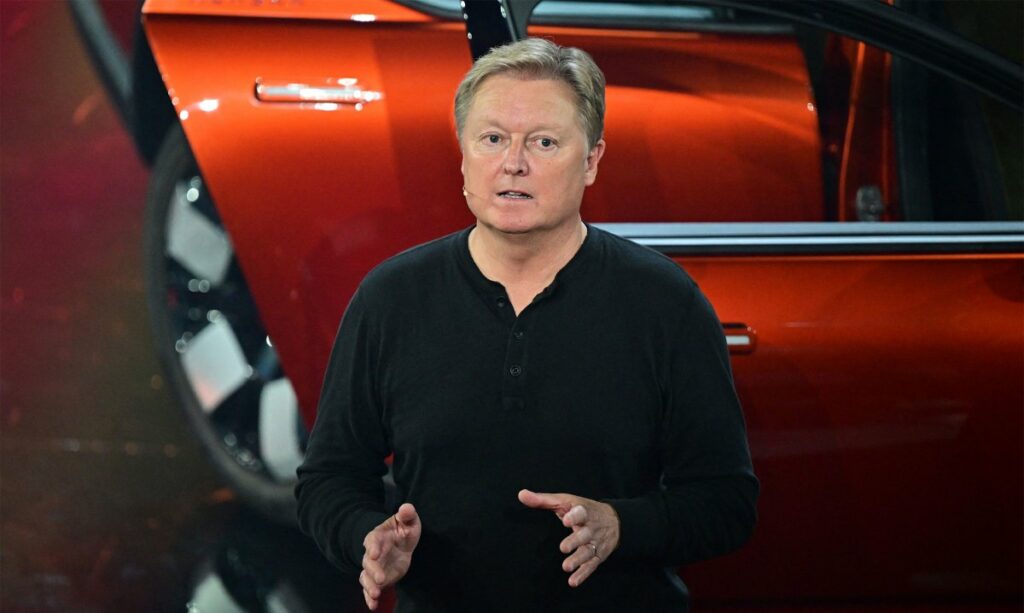For 18 months, Rivian and Google engineers worked together. Today, they’re showing off their work.
Rivian is pushing out a software update that will bring a unique version of Google Maps into its EVs. It’s the latest step in Rivian’s continued effort to distinguish its vehicles with software — an effort that has helped it strike up a joint venture with one of the world’s biggest automakers, Volkswagen.
This isn’t a typical the Google Maps integration and it’s unlike the tech company’s other collaborations in the automotive sector. For years, Google has pushed into automotive through its smartphone projection app called Android Auto as well as Google built-in, an Android Automotive operating system that integrates Google services directly into the vehicle and is used by automakers like Volvo.
The collaboration with Rivian is neither. Instead, Rivian customers who use the in-car navigation will no longer see the Mapbox-based maps. Now, they’ll see Google Maps, but with a lot of Rivian DNA sprinkled on top, including its trip planner, user interface and design, and EV charger locations, according to Rivian’s chief of software Wassym Bensaid.
“We obviously closely watch customer feedback, and I think one of the areas where we had some level of criticism was navigation,” Bensaid said. The company could have tried to incrementally improve its existing in-car navigation. Instead, it started working with Google to launch a new product.
Rivian’s challenge: it didn’t just want the default Google Maps application.
“Google really wanted to embrace a new model of collaboration with a more open integration down to the API levels for Google Maps, and that required working with a tech partner on that journey to integrate both solutions, and I think we’re really super happy with the result of this collaboration,” he said.
The new maps feature will include estimated time of arrival, traffic updates, place information, and satellite imagery from Google Maps, all of which is integrated into Rivian’s navigation system. The in-car navigation will also include tappable points of interest.
Carrying over Rivian’s trip planner is crucial as it showcases EV range estimates and charging stop selection, all powered by A Better Routeplanner. Other Rivian features like its “range on arrival,” charging stops and preferences, and the EV maker’s charging score, which gives a rating for individual charging sites based on plug-in data from Rivian vehicles, have also been folded into the Google Maps.
The new Google-based maps will start to roll out today via a software update in Rivian vehicles and its mobile app.
The updated Rivian mobile app will include additional trip planning features as well. Rivian said it added place photos, place descriptions and satellite view (with a Connect+ subscription), as well as the ability to see traffic and traffic incidents in the app. Users can also continue to share destinations and trips from the Rivian mobile app to their vehicle.


